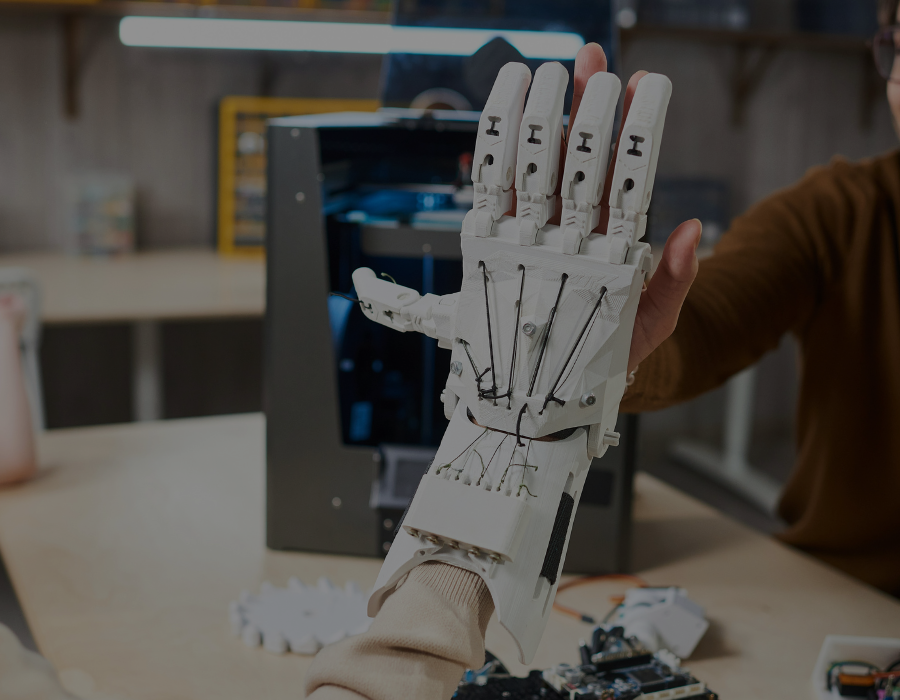A key question for the Digital Mental Health Group – led by Dr Amy Orben at the Medical Research Council (MRC) Cognition and Brain Sciences Unit at the University of Cambridge – is how growing up in a time of rapid digitalisation affects young people’s mental health and psychological well-being.
Until now, most studies in this field have used self-reported measures of time spent on social media platforms rather than focusing on how the platforms are actually being used. This approach has been an inexact science – in part due to the limitations of people’s own recollections, and also due to the lack of detailed insights into what people are interacting with on social media.
To fill this gap, Dr Orben and her team have been exploring new ways of gathering data to help shed light on pressing policy questions about young people and their mental well-being – drawing on innovative and rigorous statistical methodology, secondary datasets, and Open Science approaches.
The team has been piloting an ecological momentary assessment (EMA) study using data donations from social media archives known as Data Download Packages (DDPs) to better understand user interactions with social media content. This new approach has become possible since the General Data Protection Regulation (GDPR) was introduced across Europe and the UK in 2018, legally mandating all platforms that store their users’ data – including social media platforms – to share these data with their users upon request. If successful, the hope is that this approach could form the basis of large-scale cohort studies.
Dr Orben and her team recruited around 500 young people aged 13 to 18 from across schools around the East of England to take part in a short study that involved downloading and sharing their personal data (or DDPs) in a highly anonymised form from two of the most popular social media platforms among young people – TikTok and Instagram. The goal was to track in real time any connections between the content young people were interacting with on social media and their mood and well-being.
Dr Amanda Ferguson from the Digital Mental Health Group explained how the young people were recruited during lunchtime seminars at their schools. They received payments of up to £65 for taking part. The team had so many volunteers that they had to request more funding from the MRC Cognition and Brain Sciences Unit to cover the additional data processing costs and participant payments. Eventually, 330 young people of the original 500 recruits submitted their data.
Taking part in the study involved responding to three 5-minute questionnaires a day – before school, after school and in the evening – for two weeks regarding their social media use and how it affected their mood and emotions, whether they were feeling happy, sad or lonely in the moment, for example. The young people would then download their data onto a web portal run by the Dutch company Eyra as a series of JavaScript Object Notation (JSON) files without the data ever leaving their hard drives. Understandably, data processing protocols were incredibly tight. All of the data was anonymous and could not be linked in any way to an individual’s actual social media usage. This was crucial for protecting the young people’s privacy and adhering to the strict ethical framework for the study, which applies to all of the group’s research, according to Dr Ferguson.
Once the JSON files were analysed by the team’s data scientists, using Large Language Models, they were able to provide granular data about how young people’s social media usage was linked to their mood in real time over the two-week period. Although the data is still being analysed, the pilot study has been so successful that the Digital Mental Health Group is now planning to scale up to a much larger cohort involving thousands of young people.
“It’s a type of data that we haven’t had before,” says Dr Ferguson. “There’s been a lot of speculating about how the content people are viewing is impacting their well-being, without having any really good data. I think it’s a real sea change in social media research. It has massive value.”
Nothing has been published about the pilot project yet, but eventually the ambition would be to make the findings as open as possible to help answer pressing questions around young people’s social media use. There is a shared project in the pipeline with colleagues at Stanford University drawing on the data already
gathered. The team is now planning to use similar cutting-edge social media data for projects such as Born in Bradford – an internationally recognised research programme tracking the lives of 40,000 Bradfordians.
Breaking Barriers
In spite of the project’s success, there have been some significant barriers to overcome, including being at the whim of social media companies, says Dr Ferguson. Because there is currently no specific regulation over DDPs, both TikTok and Instagram would regularly change what was available on their data download packages in pretty significant ways, according to Dr Ferguson, with substantial knock-on effects for the data gathering process. Even with a large and well-resourced team, working for an intensive three to four months on the project, which was funded by a Medical Research Council grant, it was sometimes challenging to keep up with these changes that affected both the structure of the data download packages and the type of information included in the packages. This inevitably created delays in the data-gathering process. Relying on an external company to collect the data also added a layer of complexity, although the company themselves were very good partners, Dr Ferguson says.
“I think if there was a standardised data download package, then there’s a middle space that could be filled by academics or by a company like Eyra that could make it even more accessible to mental health researchers and then more nuanced questions can be asked,” she adds.
Dr Ferguson believes that having access to more data is alwaysg oing to be useful for researchers, especially large, openly available secondary datasets that can be revisited as statistical methods evolve: “Our group has gone back to reanalyse datasets a few times and had some pretty important findings from that,” she says. She also points to large-scale studies like the National Health Services Mental Health of Children and Young People surveys as an example of what can be achieved.
She is unsure whether the data sets provided by social media companies would be reliable enough to be included in a National Data Library, unless much more standardisation is introduced. However, she believes that a national library for data could be a powerful tool for advancing research on young people and mental health – as long as clear and consistent standards are established.
Written by Vicky Anning








